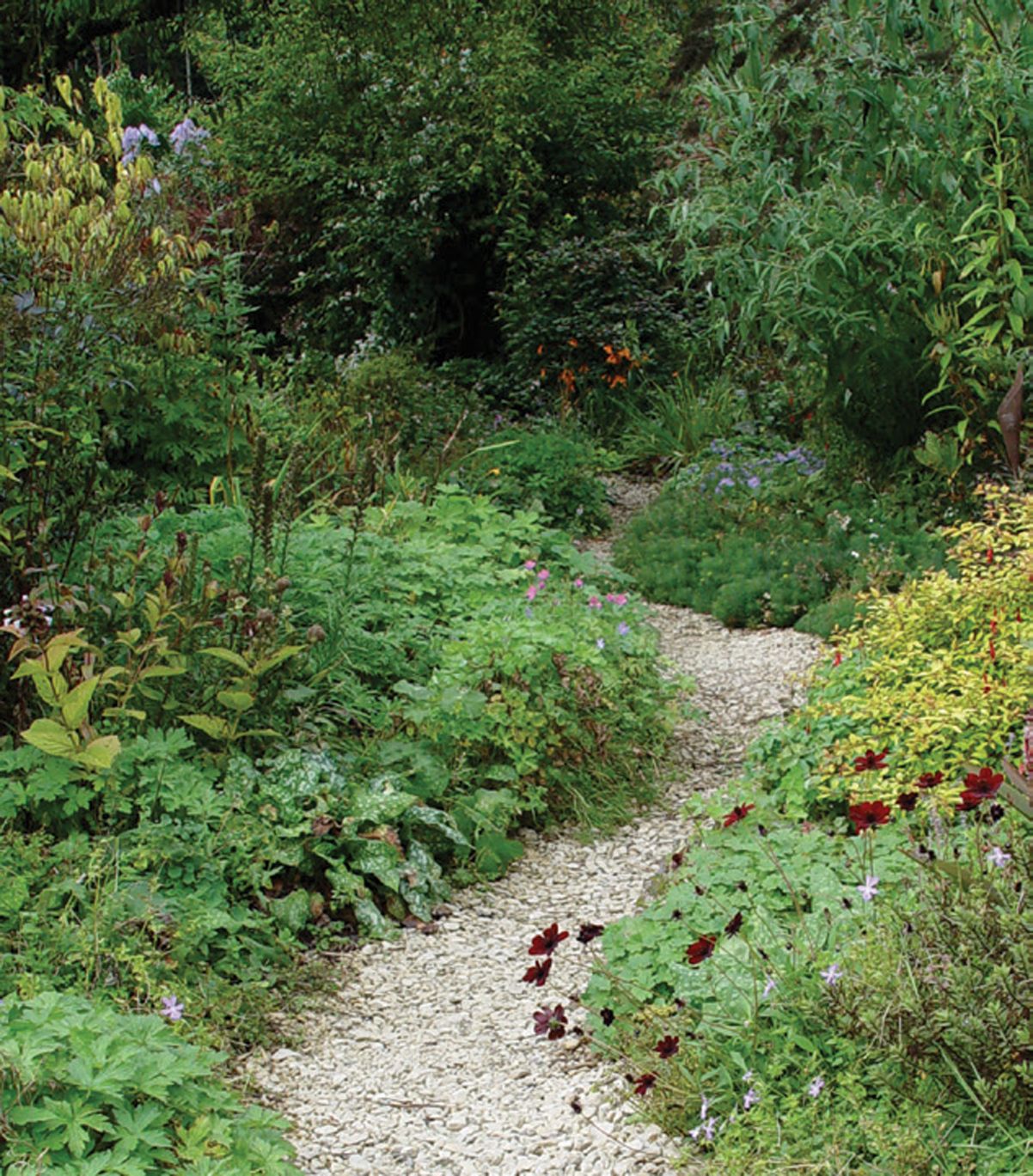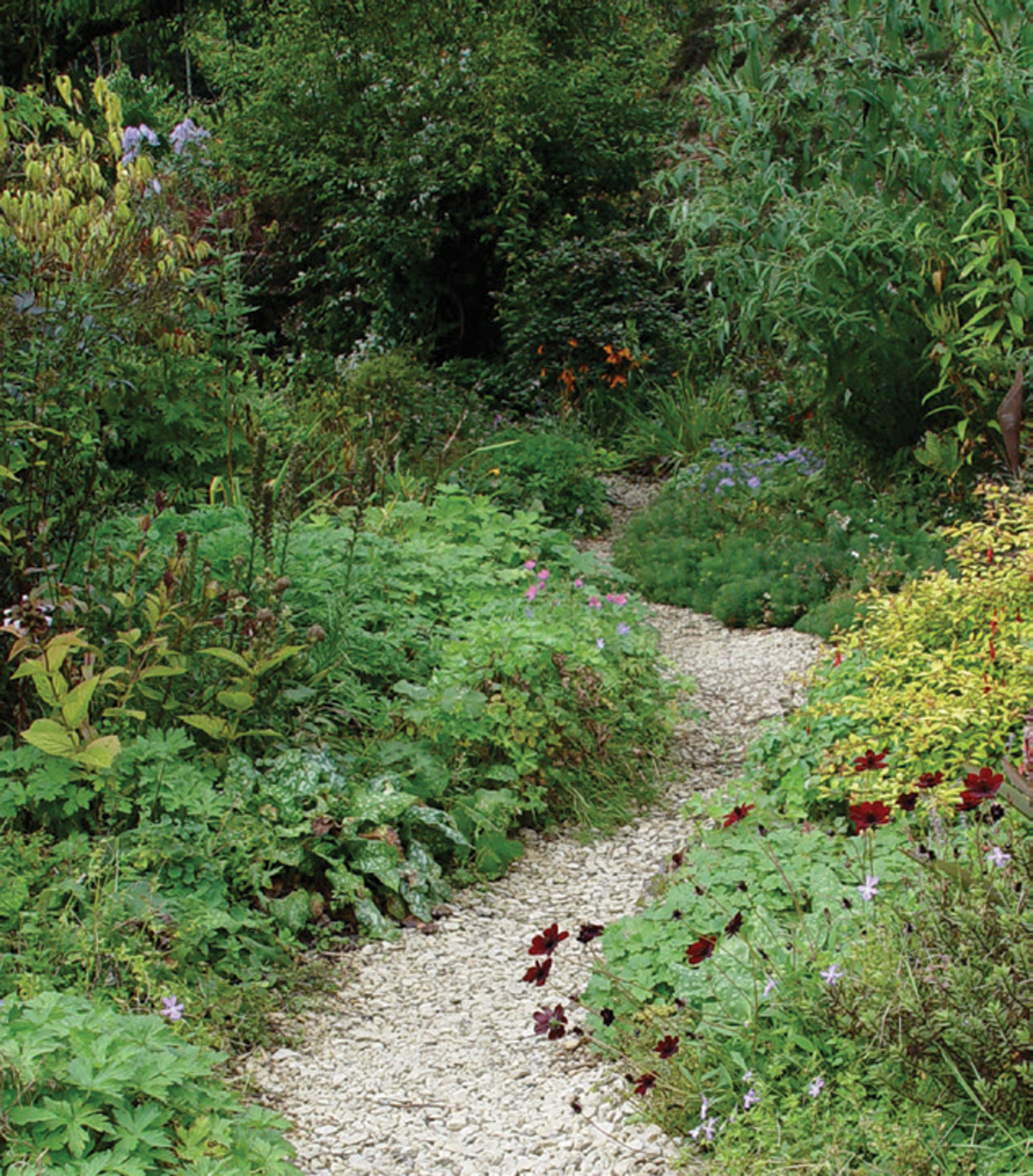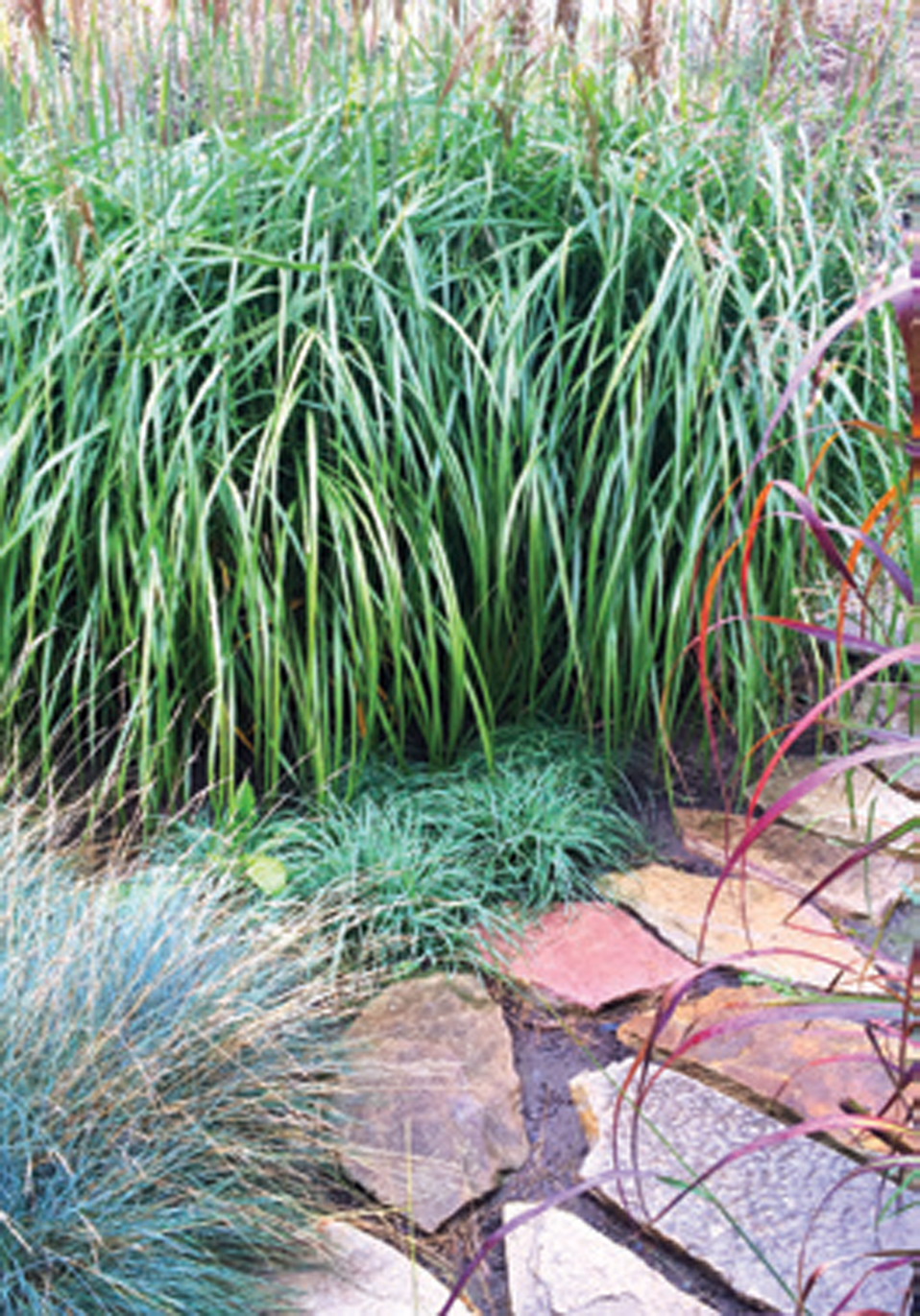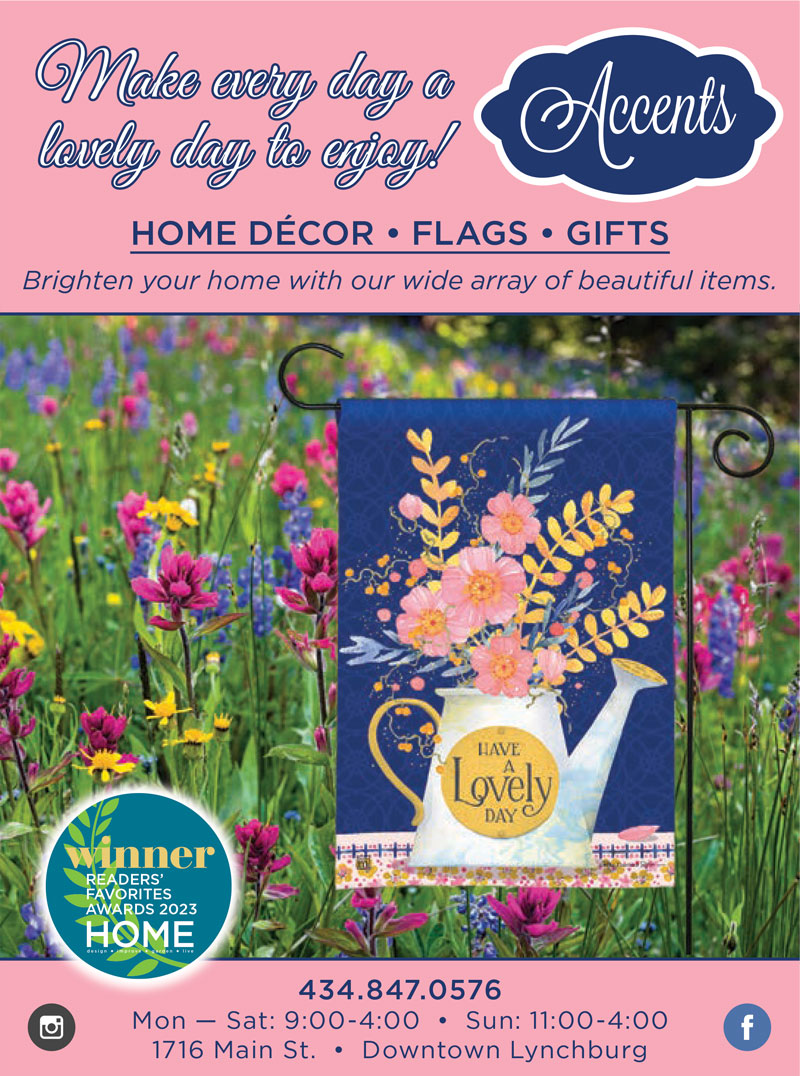A Path Adds Instant Charm To The Garden

 Have you ever considered taking that boring plot of grass in your yard and creating a garden path with some interesting features? Who can resist the allure of a path through a garden?
Have you ever considered taking that boring plot of grass in your yard and creating a garden path with some interesting features? Who can resist the allure of a path through a garden?
You may be wondering, “Why would I ever want to make extra work for myself, or hire someone else to do the job when the grass is just fine?” Just as pictures, art, mirrors and travel artifacts on interior walls add interest and character to a home, so does a specially-created garden area, often with a path as the element that beckons, “Come, join me!” It ramps up the uniqueness of the property. It also shows that someone cares about this part of the yard; it’s not just lawn that gets mowed once a week. Even if the path leads to a bench where you might never want to sit—too buggy, too hot, too noisy—your eyes will go down that path and visually rest at the bench, providing a calming, peaceful effect. And such a charming vignette can add to the value of the property.
Fall is the perfect time of year to add this garden feature, because the weather is still comfortable for working outside, and with some plants dying back, you can more clearly see the big picture of your garden.
Let’s be clear: we’re talking about a pathway, not a walkway. Walkways are necessary parts of the property leading to doors or outbuildings. A pathway, on the other hand, is a frill, a cherry on top—but like art on indoor walls, it is a welcome addition. It’s also an extension of the home that makes ignored or neglected space usable. Pathways not only can increase real estate value, they can also provide outdoor living value.
 Your pathway should reflect the style of your home. Is it traditional, cottage-style, coastal, contemporary, Asian-inspired, Southwestern or just plain neutral—meaning no real definitive style? While straight, clean lines in pathways harmonize with a contemporary look, most paths—and landscaping—are enhanced by curving lines. Elements of the path can play off the home’s exterior colors: a Tuscan look uses terra cotta and muted olive-green colors; coastal style emphasizes whites, beiges and light blues; a Southwestern feel comes from earth tones. The path may incorporate stepping stones similar to the home’s exterior stone, or brick may edge the path to complement brick on the house. And even if brick isn’t a part of your house, it lends a cottage or Americana look to a path—just add a white picket fence, and you’re all set, if that’s your style.
Your pathway should reflect the style of your home. Is it traditional, cottage-style, coastal, contemporary, Asian-inspired, Southwestern or just plain neutral—meaning no real definitive style? While straight, clean lines in pathways harmonize with a contemporary look, most paths—and landscaping—are enhanced by curving lines. Elements of the path can play off the home’s exterior colors: a Tuscan look uses terra cotta and muted olive-green colors; coastal style emphasizes whites, beiges and light blues; a Southwestern feel comes from earth tones. The path may incorporate stepping stones similar to the home’s exterior stone, or brick may edge the path to complement brick on the house. And even if brick isn’t a part of your house, it lends a cottage or Americana look to a path—just add a white picket fence, and you’re all set, if that’s your style.
You’ll need to determine where to locate this landscape feature. Ideally it will be visible from inside the home, drawing you outside to walk there and luxuriate in the outdoors. It may be visible from a window, porch, deck or patio, and ideally the start of the pathway will be near or visible from a home egress for easy accessibility.
Pathways, being less formal and less used than walkways, are often constructed of natural materials: simple stepping stones, mulch or pea gravel. A pathway should be two to three feet wide, and a curved pathway is more attractive than a straight one. If you’re simply placing stepping stones to create a path, consider surrounding them with ground cover (creeping thyme is a popular, non-invasive choice) to add visual interest.
Constructing a casual path is relatively simple; basic steps include removing a few inches of existing sod/soil, spreading some landscape fabric to prevent weeds from poking through, and filling with your material of choice. Mulch is probably the easiest and least expensive option, with a pretty straightforward prep and install. Pea gravel is a good choice and has a European flair—think about how it’s found around castles and gardens on the Continent. Plus, it’s inexpensive (only about $5 per square foot installed; about half of that if you do it yourself), prevents weeds, improves drainage, prevents erosion, acts as a rodent barrier around the base of the house, and is easy to maintain.
 Installing pea gravel is relatively easy, too. The soil should be worked to about 6 inches deep, then should be covered with a 2-inch layer of coarsely textured crushed base rock. Next, lay down a barrier of landscape cloth and cover that with a 3-inch-deep layer of pea gravel. The base rock stabilizes the pea gravel to provide a firm surface.
Installing pea gravel is relatively easy, too. The soil should be worked to about 6 inches deep, then should be covered with a 2-inch layer of coarsely textured crushed base rock. Next, lay down a barrier of landscape cloth and cover that with a 3-inch-deep layer of pea gravel. The base rock stabilizes the pea gravel to provide a firm surface.
Pea gravel does have some additional requirements. It must be contained with edging material, be it wood, brick or metal—an added cost. It will shift underfoot if the layer of base rock is omitted in installation. It will eventually pack down into the soil and need to be replenished about every four years or so, whereas mulch, being organic and subject to decomposition, needs to be refreshed every year. You’ll probably need to neaten up a gravel path’s surface with a rake every so often, or if stepping stones are set in the gravel, you’ll need to sweep and perhaps adjust them occasionally. Also keep in mind that a gravel path may be less sturdy and more difficult to navigate, so consider who will be using this path. Gravel sticks into anything except flat-soled shoes, so there should be a gravel removal mat at the entry door near the path to avoid tracking it inside the house.
In addition to making your pathway reflect your home’s style, the corresponding landscaping might have a specific theme. Give the pathway a destination; it could lead to a formal herb garden, to a shady garden or bank of shrubs, to a flower garden of perennials, to a garden arbor with trailing vines, to an area that attracts hummingbirds, or butterflies, or both. Or how about a mini-garden designed around your favorite color of flowers?
 Remember that your garden pathway isn’t something for viewing only. It can be a useful, tranquil place to relax, enjoy nature, read a book or share a cup of coffee. Furniture might be required: a bench, a table, a couple of chairs or some lounge chairs. With today’s materials, you can leave sturdy furniture and even fabric-covered cushions out in the weather without damaging them.
Remember that your garden pathway isn’t something for viewing only. It can be a useful, tranquil place to relax, enjoy nature, read a book or share a cup of coffee. Furniture might be required: a bench, a table, a couple of chairs or some lounge chairs. With today’s materials, you can leave sturdy furniture and even fabric-covered cushions out in the weather without damaging them.
Once you have built your pathway and installed its surrounding greenery, you can revel in the closeness of nature—hummingbirds, butterflies, herbs, flowers or whatever you have used or attracted to populate your pathway and landscape area. Enjoy!
diy, garden lanscaping, garden pathway, gravel, landscape, mulch, outdoor pathways, pathways, pea gravel, stepping stones






